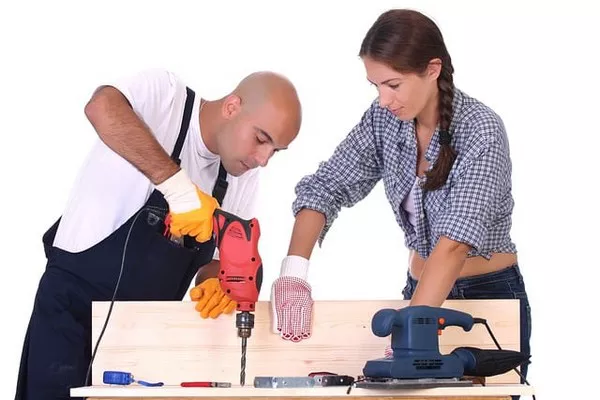In today’s technology-driven world, electrical equipment is an integral part of our daily lives. From household appliances to industrial machinery, we rely heavily on these devices to carry out essential tasks efficiently. However, with the increasing use of electrical equipment, ensuring safety has become a paramount concern. This is where the concept of “Class II electrical equipment” comes into play. In this article, we will delve into the definition, characteristics, safety features, and applications of Class II electrical equipment to understand its significance in maintaining electrical safety.
Understanding Class II Electrical Equipment:
Class II electrical equipment, also known as “Double Insulated” or “Reinforced Insulation” equipment, is a designation used to categorize certain electrical devices based on their design and safety features. The primary objective behind Class II equipment is to provide an additional layer of protection against electrical shock. Unlike Class I equipment, which relies on a single layer of basic insulation and an earth connection, Class II equipment utilizes two layers of insulation or insulation combined with other safety measures, eliminating the need for an earth connection.
Characteristics of Class II Electrical Equipment:
Double Insulation:
The defining feature of Class II equipment is the presence of two layers of insulation, which creates a physical barrier between the internal electrical components and the external user. These insulating layers prevent the risk of electric shock by blocking the flow of current to the device’s outer surface.
Absence of Earth Connection:
One of the key differentiators between Class I and Class II equipment is the lack of reliance on an earth connection in the latter. While Class I devices require proper grounding for safety, Class II equipment achieves safety through its double insulation, eliminating the need for an earth connection.
Distinctive Markings:
Class II electrical equipment is often labeled with a symbol indicating double insulation. This symbol typically consists of two squares, one inside the other, and is internationally recognized as a representation of Class II devices.
Safety Features and Advantages:
1. Enhanced Electrical Safety:
The primary advantage of Class II equipment lies in its enhanced electrical safety. The double insulation acts as an effective barrier to prevent electric shock even if a fault occurs within the device.
2. No Reliance on Grounding:
Since Class II devices do not require an earth connection, they can be used in locations where proper grounding might be impractical or impossible. This makes them suitable for a wide range of environments, including older buildings with outdated electrical systems.
3. Reduced Fire Hazard:
The presence of double insulation reduces the risk of electrical leakage, which in turn lowers the likelihood of fire hazards caused by short circuits or electrical faults.
4. Versatility and Flexibility:
Class II equipment is generally more portable and versatile due to the absence of a reliance on a grounding connection. This makes these devices well-suited for applications where mobility is crucial, such as power tools and some medical devices.
5. User Protection:
Class II equipment is especially relevant for users who may not have specialized knowledge of electrical systems or may not be familiar with proper grounding procedures. It provides an added layer of safety to protect even inexperienced users from potential electrical hazards.
Applications of Class II Electrical Equipment:
Class II electrical equipment finds application in various industries and domains due to its safety features and adaptability. Some common areas where Class II devices are frequently used include:
1. Household Appliances:
Many household appliances, such as blenders, hairdryers, and coffee makers, fall under the Class II category. These devices are designed with double insulation to ensure user safety during everyday use.
2. Medical Devices:
Certain medical equipment, such as nebulizers and some types of patient monitors, are classified as Class II electrical equipment. The added safety measures are crucial in medical settings where patient well-being is of utmost importance.
3. Audio and Video Equipment:
Audio devices like headphones and video equipment like digital cameras and camcorders often belong to the Class II category, offering consumers a safer audiovisual experience.
4. Handheld Power Tools:
Many power tools, such as electric drills, sanders, and jigsaws, are designed as Class II equipment. This allows workers to use these tools safely without the need for an earth connection, enhancing flexibility and mobility on construction sites and workshops.
5. IT and Computer Peripherals:
Some computer peripherals, such as printers and scanners, are also classified as Class II devices. These peripherals are widely used in offices and homes due to their enhanced safety features.
Compliance and Regulatory Standards:
In most countries, Class II electrical equipment must meet specific compliance and regulatory standards to ensure that they adhere to safety guidelines. Manufacturers are required to obtain certifications and approvals from relevant authorities, such as UL (Underwriters Laboratories), CE (Conformité Européene), or CSA (Canadian Standards Association), depending on the region of sale.
Additionally, regulatory bodies like the International Electrotechnical Commission (IEC) and the National Electrical Manufacturers Association (NEMA) provide guidelines and standards related to Class II equipment, which manufacturers must follow to ensure consistent safety standards worldwide.
Conclusion:
Class II electrical equipment plays a critical role in ensuring electrical safety in various applications. With its double insulation and the absence of a reliance on earth connection, Class II devices offer enhanced protection against electric shock, reducing the risk of accidents and fire hazards. From household appliances to medical equipment and power tools, Class II devices have found their place in numerous industries, providing users with a safer and more reliable experience. As technology advances and safety standards evolve, Class II equipment will continue to be an essential component in promoting electrical safety in our everyday lives.

